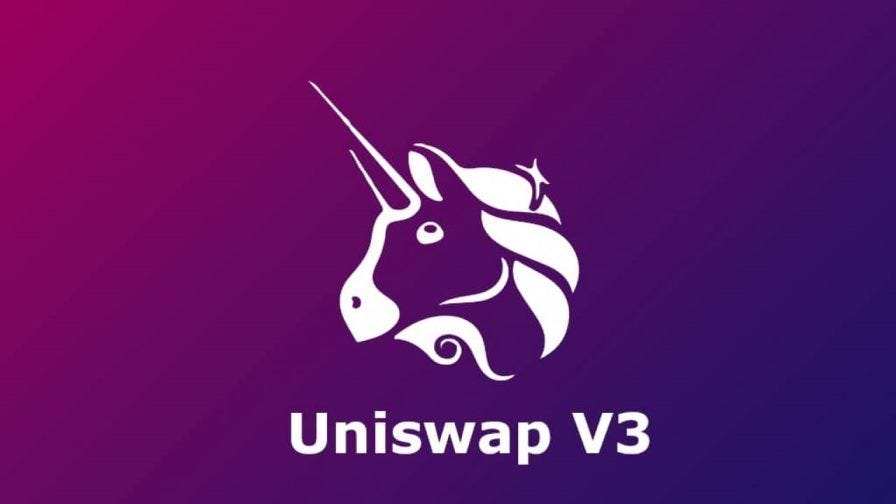Table of Contents
- V3 vs. V2 – An overview
- V3 and Capital Efficiency
- What Happens If I Just Provide Liquidity to Uniswap v3 the Same Way I Do to v2?
- How Much in Fees Can You Earn as a Retail User on v2 vs. v3?
- Will Retail Users Be Able to Enter V3 LPs in the Future?
Is UNISWAP V3 Sacrificing Retail for Capital Efficiency?: Flipside Crypto
We’ve encountered numerous narratives praising the effectiveness of Uniswap v3:
Nevertheless, as per Mark Richardson, Head of Research at Bancor, Uniswap v3 comes at a cost.
Did Uniswap genuinely prioritize capital efficiency over retail LPs? Let’s delve into the details to uncover the truth.
V3 vs. V2 – An overview
Examine these crucial Uniswap metrics to gain insights into its performance.
In terms of Total Value Locked (TVL) and active users, V2 surpasses V3, boasting 18K daily users and $4B in TVL, compared to V3’s 8.45K daily users and $2.5B TVL.
In the realm of trading volume, V3 emerges victorious with a daily volume of $6.79B, almost quadrupling the transaction volume observed on V2.
=> At first glance, V3’s capital efficiency stands out, producing four times more volume than V2 while utilizing only half the Total Value Locked (TVL).
Despite the evident capital efficiency in V3, the question arises: Why do users persist in keeping their liquidity in V2? Considering the volume/TVL ratio of 2.79 in V3 and merely 0.71 in V2, migrating to V3 should theoretically result in earning at least 3.8 times more.
Indeed, the actual narrative is more intricate than it appears.
V3 and Capital Efficiency
To comprehend the functionality of v3, let’s delve into its distinctive feature: concentrated liquidity.
Liquidity Providers (LPs) can merge multiple distinct concentrated positions within a single pool. For instance, an LP involved in the ETH/DAI pool might allocate $100 to the price range of $1,000-$2,000 and an additional $50 to the ranges of $1,500-$1,750.”
Moreover:
“Unlike previous Uniswap versions where swap fees were automatically reinvested, in Uniswap v3, these fees are collected independently from the pool and must be manually redeemed by the owner when they decide to claim their fees.”
Active monitoring and adjustment of your position are essential for optimizing yield in Uniswap v3. Additionally, manual claiming of rewards is required for compounding. In contrast, v2 only necessitates depositing funds into the LP pool without the need for further intervention.
This effectively provides an advantage to a select group of individuals who:
-
Possess a viable strategy, employ hedging techniques, and navigate effectively to mitigate the impact of high impermanent loss on concentrated positions.
-
Hold a capital size substantial enough to offset the substantial gas fees incurred with each position rebalancing or reward claiming on the Ethereum network.
Those with the capacity to do so will experience a 4000x increase in capital efficiency, creating a significant disparity in rewards distribution favoring a smaller group of individuals.
What Happens If I Just Provide Liquidity to Uniswap v3 the Same Way I Do to v2?
Using 20% as an example, the broadest liquidity concentration in the last 30 days fluctuates between 20%-30%, with the majority of the time hovering around 5%.
There exists a 10x disparity between a user actively fine-tuning their position within the 20% range and a standard user who simply provides liquidity across the 0 to infinity range (v2).
The distribution of fees you earn in a pool is determined by the ratio of your liquidity to the total liquidity present.
=> Due to the concentrated holdings of the top 10 Liquidity Providers (LPs), their effective liquidity will surge by a factor of 10 compared to those who provide liquidity without specifying a range.
=> Retail users not adjusting their range accordingly may experience a significant 90% reduction in earned fees.
How Much in Fees Can You Earn as a Retail User on v2 vs. v3?
For retail users:
-
For the v2 pool, the fee/liquidity ratio stands at 0.000843, calculated as 184,461 / 218,728,477.
-
The corresponding ratio on v3 is 0.00211, derived from 703,170 / 332,460,000. However, if you don’t provide liquidity in a tight range or actively manage your position, your effective ratio will be reduced by a factor of 10, resulting in 0.00021.
Furthermore, on specific days, liquidity tends to be concentrated within the 10% range:
=> In this scenario, v2 provides rewards that are 8 times greater than those offered by v3.
Hence, while v2 ensures uniform rewards per dollar deposited for everyone, v3 introduces the possibility of certain groups receiving more rewards at the expense of others receiving less.
Will Retail Users Be Able to Enter V3 LPs in the Future?
While layer 2 solutions may address the gas issues on Ethereum, they won’t eliminate the technical barrier—specifically, the complexity of adjusting the range to maximize profit. Unless an optimized strategy emerges that remains unbeatable, the nature of this game ensures there will always be winners and losers.
In the end, the role of a liquidity provider on a decentralized exchange is, to some extent, managed by a centralized group of individuals.


